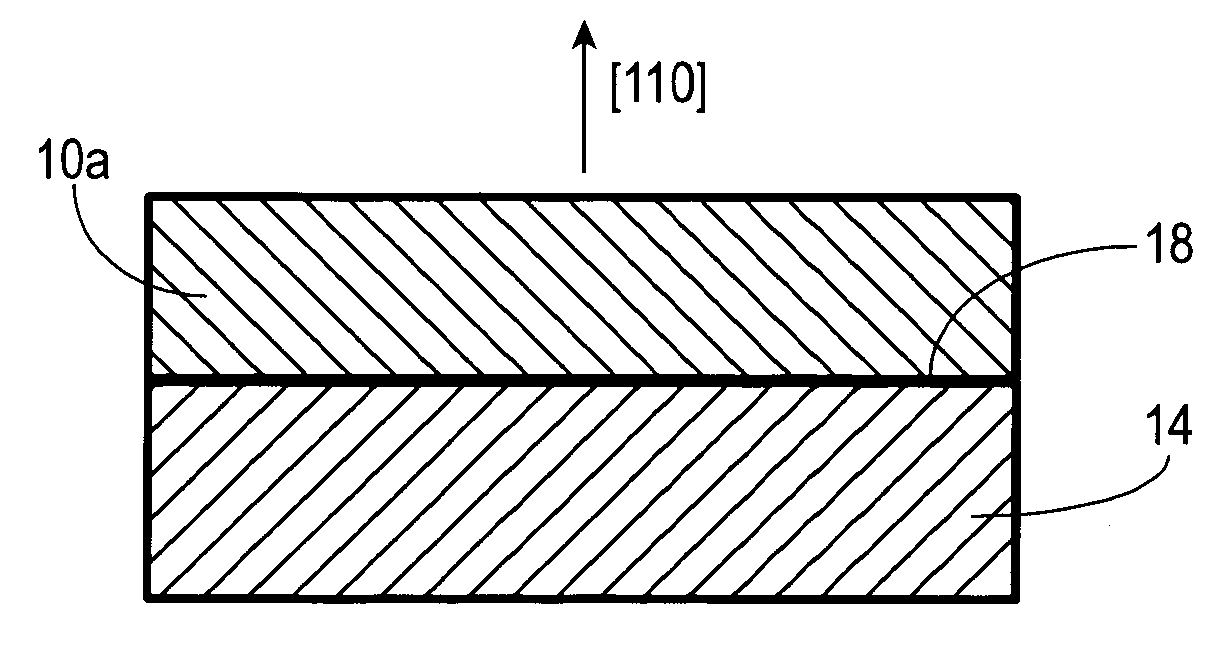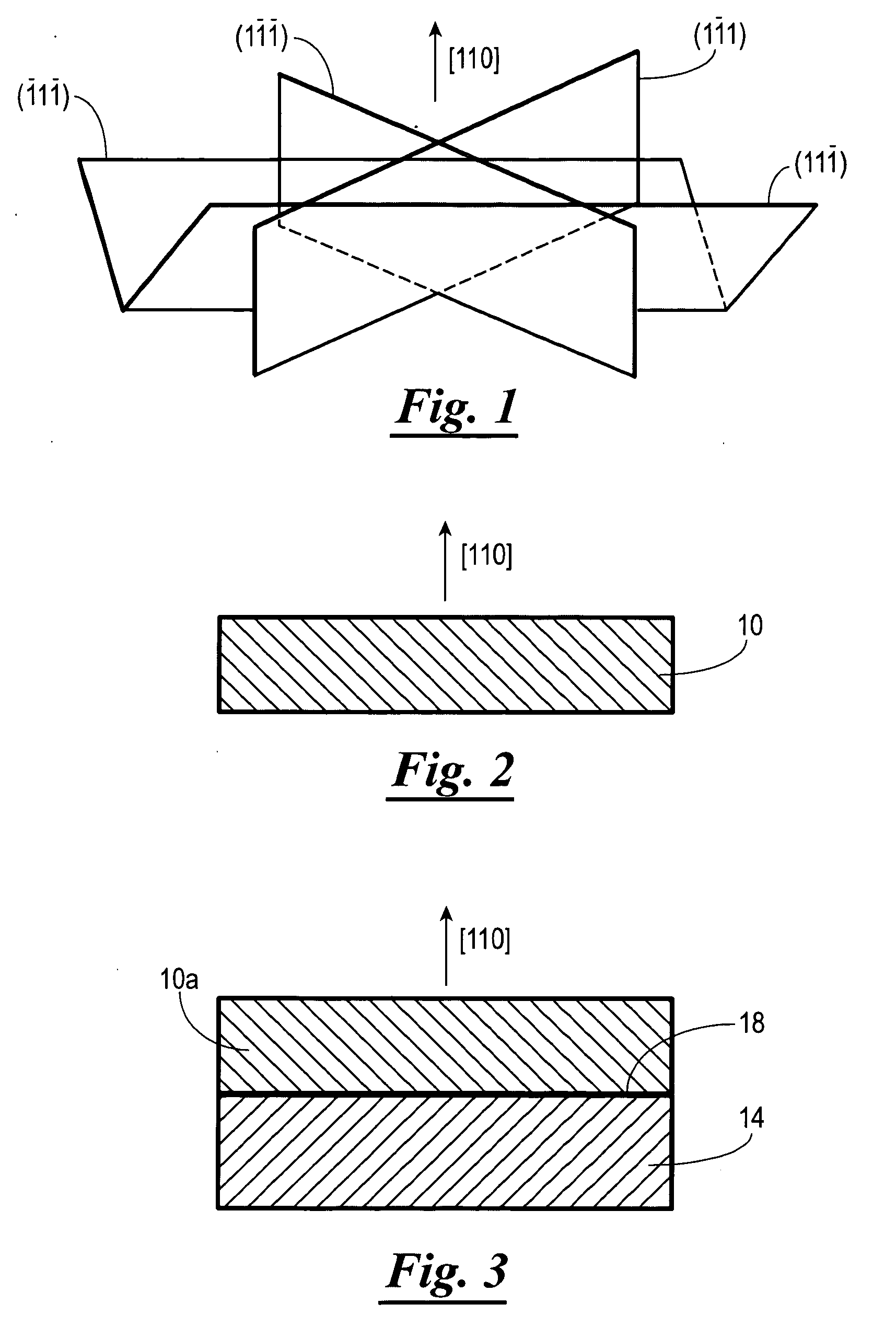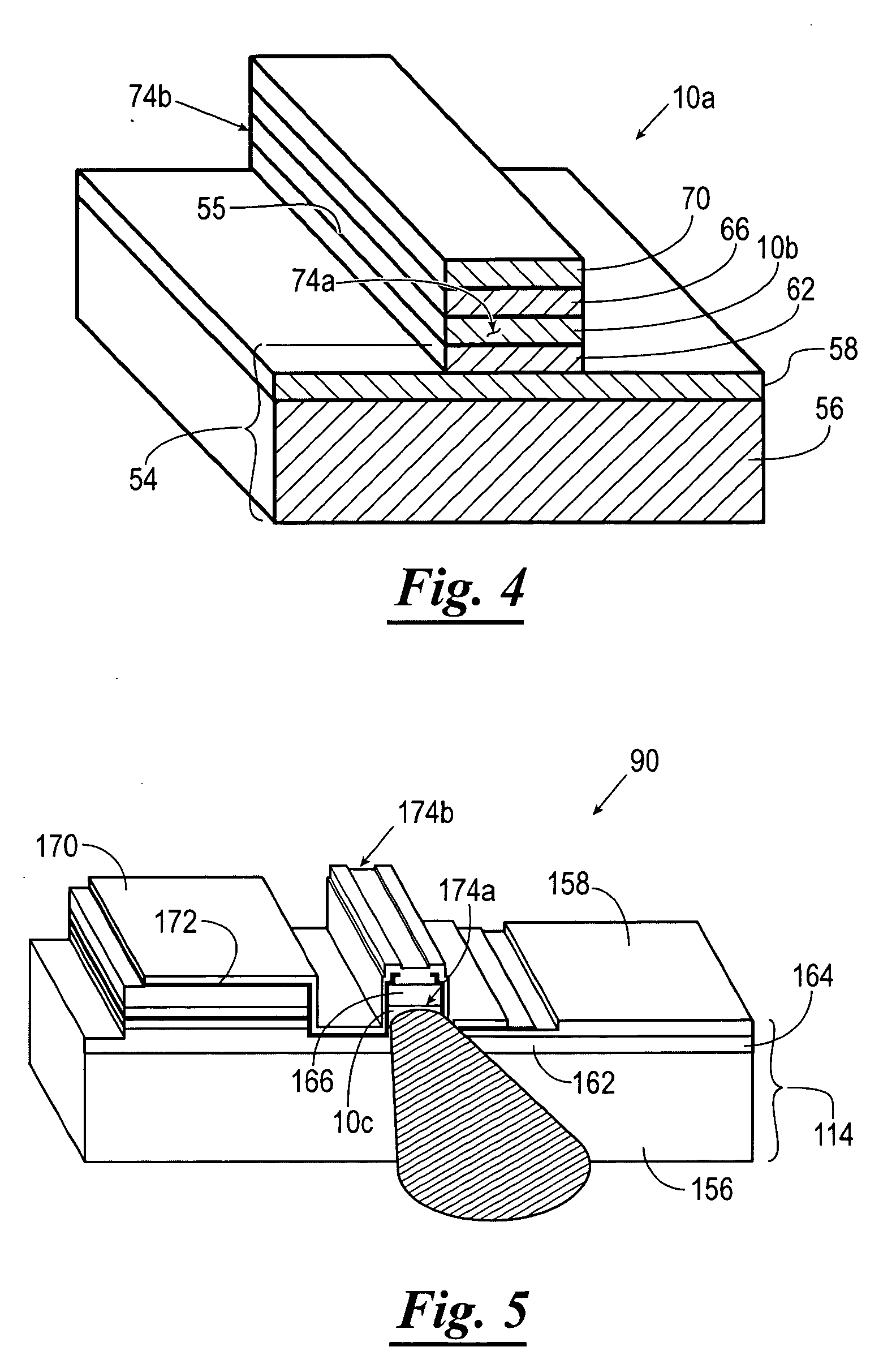Orientated group IV-VI semiconductor structure, and method for making and using the same
a technology of semiconductor structure and orientated group, which is applied in the direction of lasers, bulk negative resistance effect devices, semiconductor lasers, etc., can solve the problems of limited tuning range and performance of vcsels, and the performance of these vcsels remains far from the desired level, so as to achieve the effect of improving performan
- Summary
- Abstract
- Description
- Claims
- Application Information
AI Technical Summary
Benefits of technology
Problems solved by technology
Method used
Image
Examples
Embodiment Construction
[0024] Generally, the present invention relates to a IV-VI group semiconductor structure having a [110] orientation, and a method for making and using the same. The [110] orientation of the group IV-VI semiconductor structure of the present invention offers some advantages over other orientations. Shown in FIG. 1 is a schematic representation of the geometry of [110] surfaces in a diamond cubic semiconductor material with the {111} planes shown. For example, a IV-VI lead salt semiconductor material having a rock salt structure would belong to the diamond cubic group. Also, shown in Table 1 below is the effective mass for different orientations for the energy minima shown in FIG. 1. For PbSe, ml≈2mt.
TABLE 1Effective masses along differentorientations for L-valley energy minimaSurfaceOrientationmxmymzDegeneracy{100}mt+2ml33mtmlmt+2ml4{110}mtml+2mt33mtmlml+2mt2mtmlml2{111}mtml1mtmt+8ml99mtmlmt+8ml3
[0025] The [110] orientation of the group IV-VI semiconductor structure of ...
PUM
| Property | Measurement | Unit |
|---|---|---|
| thickness | aaaaa | aaaaa |
| thickness | aaaaa | aaaaa |
| semiconductor | aaaaa | aaaaa |
Abstract
Description
Claims
Application Information
 Login to View More
Login to View More - R&D
- Intellectual Property
- Life Sciences
- Materials
- Tech Scout
- Unparalleled Data Quality
- Higher Quality Content
- 60% Fewer Hallucinations
Browse by: Latest US Patents, China's latest patents, Technical Efficacy Thesaurus, Application Domain, Technology Topic, Popular Technical Reports.
© 2025 PatSnap. All rights reserved.Legal|Privacy policy|Modern Slavery Act Transparency Statement|Sitemap|About US| Contact US: help@patsnap.com



